
Temperatures cooled down a bit this evening--meaning around 80 degrees (27 C)--so I thought I would do some light garden work after dinner. There's a reason why this is such an uncharacteristic thing for me to do. The temperature was deceptive and an hour later I was drenched in sweat, but at least I got some begonias planted (yes, I'm still planting begonias, and still have a few more to go!) and Vitex agnus-castus deadheaded. The plant was just about finished blooming and trimming it back now will give me a good second bloom in a few weeks. I'm already seeing a second bloom on my butterfly weed (Asclepias tuberosa), which I deadheaded just two weeks ago.
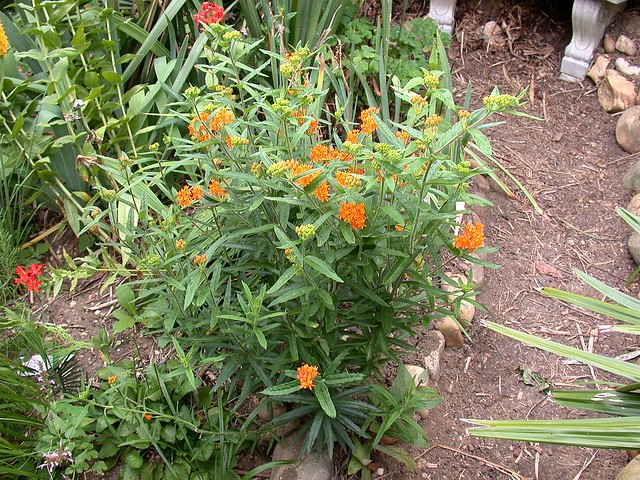
Asclepias tuberosa, second bloom after deadheading
Otherwise I'm not very busy in the garden this time of year. If it doesn't rain I'll spot-water the most vulnerable plants, and pull a weed here or there, but overall it's just too hot, too humid, and too buggy to spend much time in the garden in July and August. This is one reason why I love having a rooftop deck: I can enjoy the garden from above, and whether it's the height or the breeze, the mosquitoes and other insects just don't make it up there. (Well, except for the ants. The ants are everywhere.) The downside of my lazy summer is that the garden can get overgrown very quickly, especially after heavy rain.
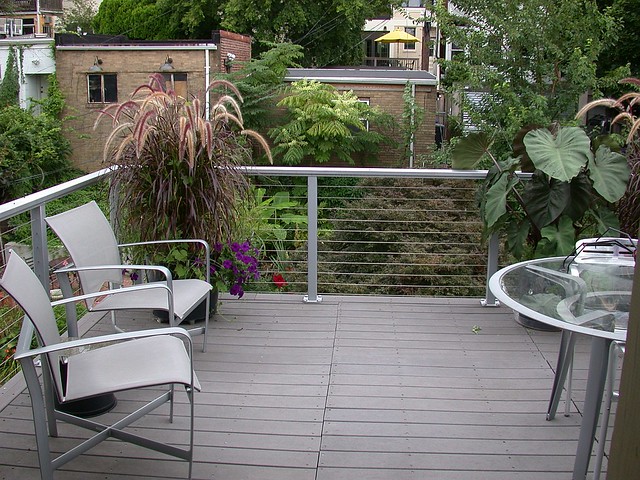
Roof deck
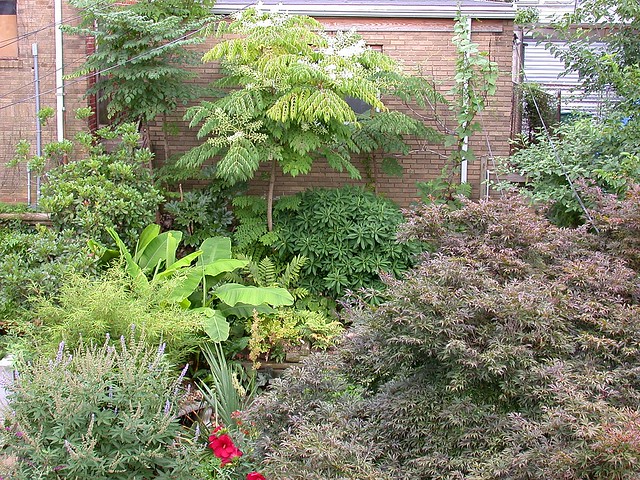
View from roof deck
Way in the back, at the top of the hill against the garage, Aralia elata is blooming, showering tiny white flowers all over the plants beneath it. In a few weeks, when the fruit are ripe, it will be very popular with the mockingbirds and catbirds. Musa basjoo, my hardy banana, should be nearly 20 feet tall by now but came back very late this spring and is still barely visible. But the hibiscus! 'Fireball' and 'Lord Baltimore'--two cultivars with very similar enormous red flowers, 'Fireball' a little more on the maroon side and with red-tinged foliage--are so bright they can probably be seen from space.
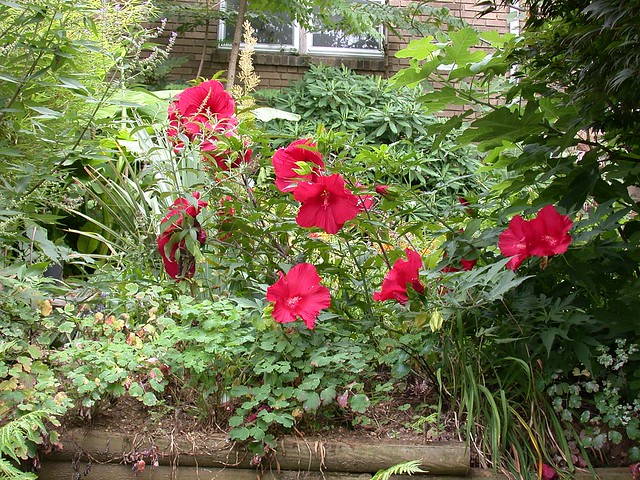 Hibiscus 'Fireball' and 'Lord Baltimore'
Hibiscus 'Fireball' and 'Lord Baltimore'Having done nothing at all except trim off the dead leaves, I'm seeing good recovery on my one surviving windmill palm, Trachycarpus fortunei "Bulgarian". For a long time I thought it was dead, but it's putting out several new fronds and seems to be making up for lost time.
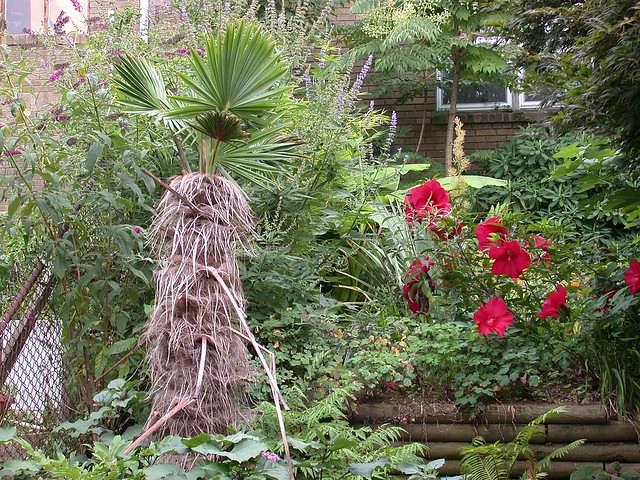
Trachycarpus fortunei "Bulgarian" showing new growth
At least some plants rated as hardy to zone 8 made it through our first proper zone 7 winter in several years. The apparently indestructible Clerodendrum bungei, which died to the ground, has come back as if winter never happened and is starting to bloom. The plant is incredibly invasive, spreading by root suckers all over the garden, but I tolerate this beautiful monster because the bold, deep green foliage looks tropical, it blooms reliably all summer, and butterflies love it. Another beautiful monster is Passiflora caerulea. The photo below is from a previous year, and after years of struggling to contain it seemed to be finally dead, but as I was working this evening I found several small new shoots popping up, apparently from deeply buried roots.
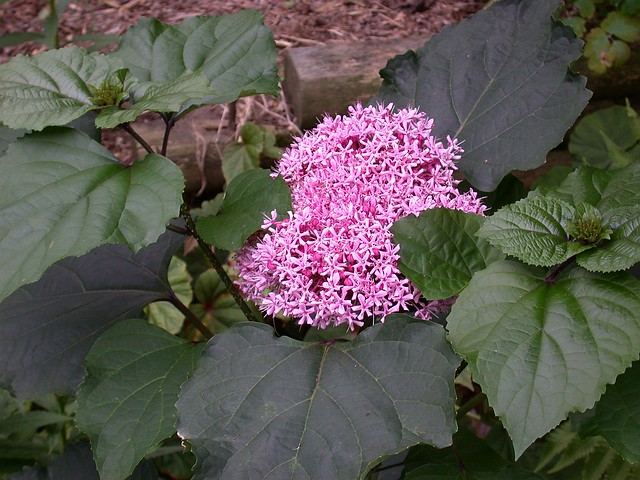
Clerodendrum bungei
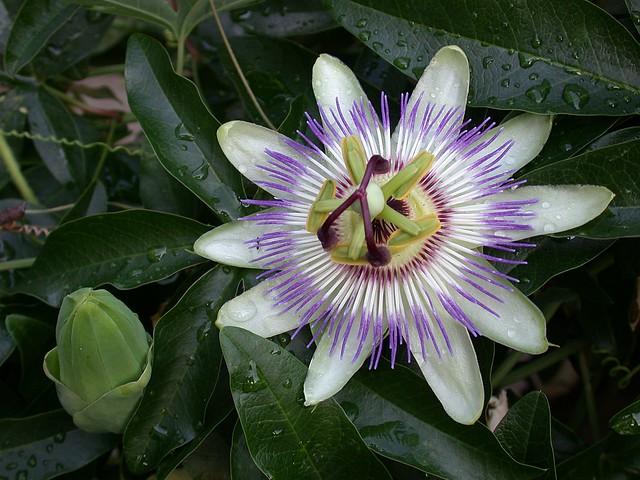
Passiflora caerulea (July 2010)
And of course there are the begonias. I'll discuss these in more detail in a later blog post; suffice to say that I was pleasantly surprised by the hardiness of several of them after our coldest winter in 20 years! For now I think I'll retire to the roof with a mojito in hand.
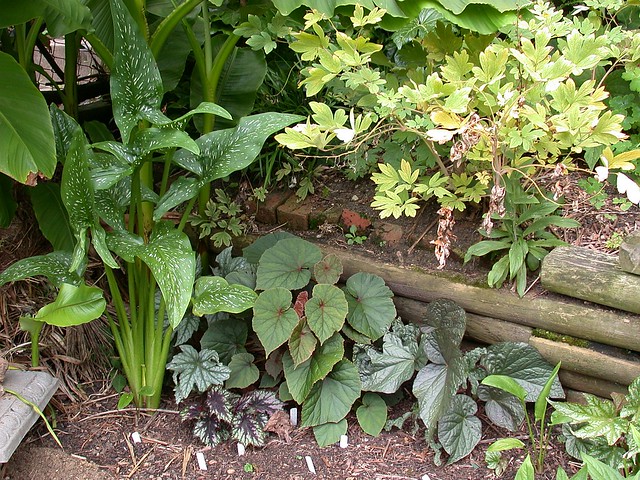
Begonia bed
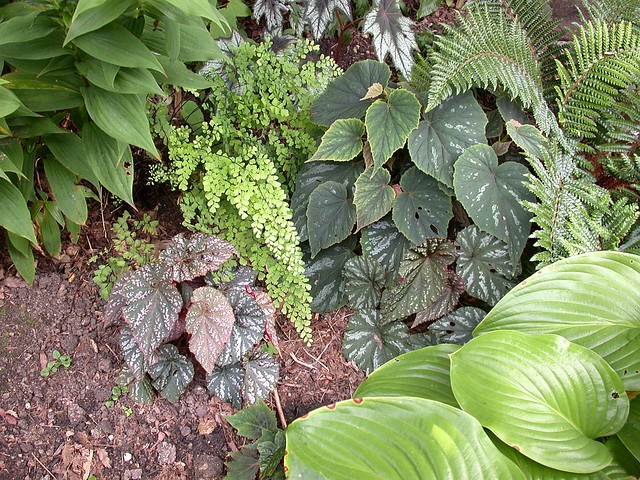
More begonias
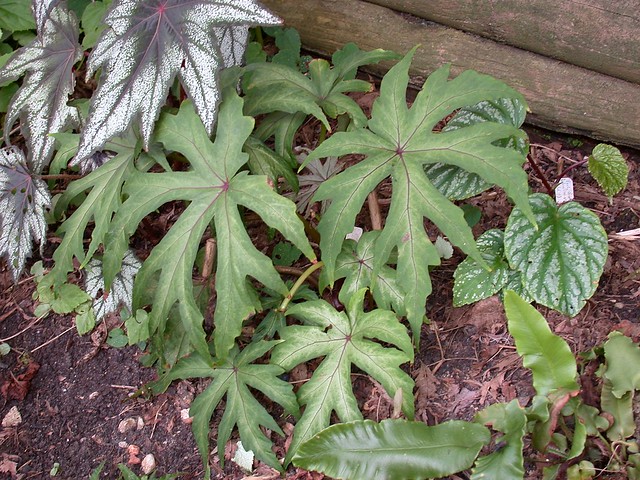
Begonia pedatifida, survivor of 3 winters
Did you like this post? Please click on the share buttons below to share on Facebook, Twitter, or Pinterest!

I'm craving for a mojito now! Roof deck looks great and so is the rest of the garden. There's a heat wave here too, by British standards most of our gardening activities are centered on watering.
ReplyDeleteWe've actually been pretty lucky this year, heat-wise; we haven't had many days above 90 (ca. 32 C) and the nights have been cooling down very nicely. We even slept with our windows open a few days ago! I hope this means a good year for begonias, since many of them don't appreciate the heat.
DeleteYour garden looks fab. I'm just in the process of creating a new garden, post new build, so looking for all kinds of inspiration. You may enjoy some of my new additions thus far http://vonniethehappyhippy.blogspot.com/p/photo-gallery-4-local-flora.html
ReplyDeleteThanks, I enjoyed looking at your blog and photos!
DeleteAwesome John! Cross those hardy survivors and get some color. The Trachys - onle one? I use frost cloth here in our cold snaps. It is easy to use. Perhaps next COLD winter wrapping them in the 8mil weave (24F protection) it may help to reduce the brutal cold? Just a thought.
ReplyDeleteAssuming our palms make it through another winter (which they won't, if we get another one like the last), I suspect a lot of people will be crossing the survivors. But I'm still not convinced that survival means genetic hardiness, rather than simple luck, good placement, shelter from wind, or other non-genetic causes that are ultimately more or less random.
DeleteI love your garden. I am with you on the Clerodendrum bungei. Mine have also survived up here in NJ, and should begin blooming fairly soon.
ReplyDeleteThanks! I grow C. bungei in part for butterflies but I haven't seen a single butterfly in my garden this year. Are you getting any up your way?
Delete